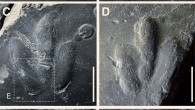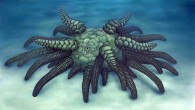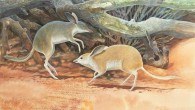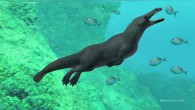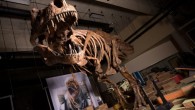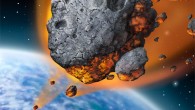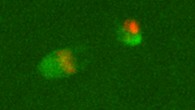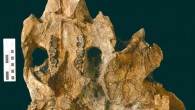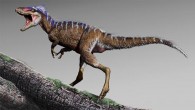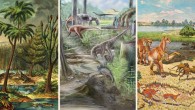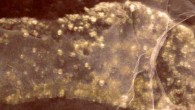Dr. Steven May, a paleontology research associate at the University of Texas at Austin, has studied and identified an extensive collection of fossils from dig sites near Beeville, Texas. The results appear in the journal Palaeontologia Electronica. An artist’s interpretation of ancient North American fauna. The new study revealed that elephant-like gomphotheres, rhinos, horses and antelopes with slingshot-shaped horns were among the species recovered...


